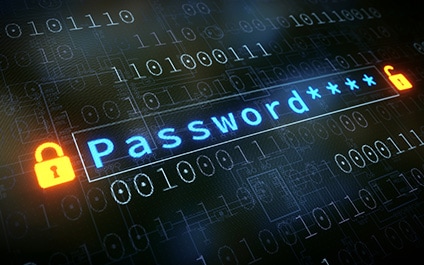
[img src=”/wp-content/uploads/sites/2/2019/01/img-blog-The-Most-Commmonly-Used-Passwords-2018.jpg” class=”aligncenter”]
The Internet has made life easier for the majority of people. You can bank online, view results of your medical tests, access your email from anywhere, among countless other tasks that are all protected by just one thing: your password. And, for nearly three percent of Internet users, cracking your password is as easy as stringing six consecutive numbers together.
For the eighth year, SplashData analyzed more than 5 million passwords that were leaked on the Internet to determine the most commonly used passwords.
Here are the top 10:
- 123456
- password
- 123456789
- 12345678
- 12345
- 111111
- 1234567
- sunshine
- qwerty
- Iloveyou
See one of your passwords on the list? Then it’s time to think of a stronger security measure.
In North America and Western Europe, the two regions where the majority of the leaked passwords are held, it’s extremely easy to hack into someone’s account and steal their data and identity. It’s more than likely that you use the same password for more than one account; the last thing we all want to do is remember another password. But should that account be compromised, the hacker now has your email address and password, which could grant them access to your banking information, social media accounts, and could lead to them stealing your identity.
So, How Can You Create A Strong Password?
The most secure passwords typically include upper and lower-case letters, numbers, and a symbol. While these combinations can be more difficult to remember, they’re also harder for a hacker to crack. Other words to stay away from? According to Morgan Slain, the CEO of SplashData, “Hackers have great success using celebrity names, terms from pop culture and sports, and simple keyboard patterns to break into accounts online because they know so many people are using those easy-to-remember combinations”.
Further Protecting Your Password
Creating a strong password is only half the battle – there are other measures you should take to keep your password secure.
First, opt for two-step verification when possible. With this method, the program you are accessing will send a verification code to either your cell phone or email address that you need to input before logging in. As long as your cell phone and email address are secure, this will prevent hackers from accessing your account.
Another good idea is to use a different password for every account. The more passwords you have, the more protected your data is. Though it’s hard to remember password after password, there are plenty of password managers available that will store your passwords for you – just make sure your password manager is more secure than a post-it note stuck to your desk.
Lastly, make sure you keep your password a secret. No matter how strong your password is, if someone else knows the code, you are potentially at risk. You should also only enter your password into secure websites – look for “HTTPS” prefacing the URL of the website.
Remember, it could only take one weak password for a criminal to hack into your entire network. Contact us today ensure your business is protected.

Stephen Sweeney, CEO of of Uprite.com, with 20+ years of experience brings tech and creativity together to make cybersecurity simple and IT support seamless. He’s on a mission to help businesses stay secure and ahead of the game!

